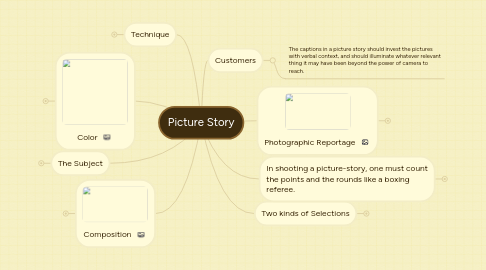Picture Story
da Marisa Refe


1. The Subject
1.1. Whether the item is little or big, anything can be the subject.
1.2. It is everywhere
2. Composition
2.1. If a photograph is to communicate its subject in all its intensity, the relationship of form must be rigorously established.
2.1.1. Photography implies the recognition of a rhythm in the world of real things.
2.2. Must be one of our constant preoccupations.
2.3. Only valid angles in existence are the angles of the geometry of composition and not the ones fabricated by the photographer who falls flat on his stomach or performs the other antics to procure his effects.
3. Color
3.1. Black-and-white photography is a deformation
3.1.1. Deformation = Abstraction
3.1.2. Seems appropriate to be in black and white for photo reporting.
3.2. In order to create in the field of color photography, one must transform and modulate colors in order to achieve liberty of expression within the framework of the laws which were codified by the Impressionists.
4. Technique
4.1. It is important only insofar as one must master it in order to communicate what one sees.
4.2. Everyone has a different technique, but it has to be created by themselves, and adapted solely in order to make one's vision effective on film,
5. Photographic Reportage
5.1. Objective: To depict the content of some event which is in the process of unfolding, and to communicate impressions.
5.2. Joint operation of the brain, the eye, and the heart.
5.3. The page serves to reunite the complementary elements which are dispersed throughout several photographs.
6. Two kinds of Selections
6.1. 1. The selection one makes when looking through the view-finder at the subject
6.2. 2. The selection when films have been developed and printed
7. In shooting a picture-story, one must count the points and the rounds like a boxing referee.
7.1. It is essential to approach the subject on tiptoe even if the subject is still-life.
7.1.1. Velvet Hand
7.1.2. Hawk's Eye
